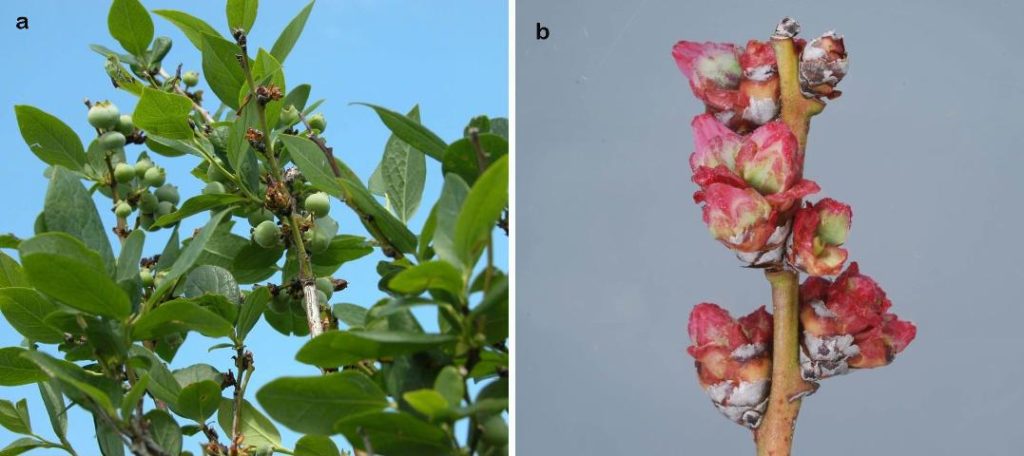By Clint Thompson
Multiple control methods are available for blueberry producers trying to manage bud mites. It starts post-harvest when scouting and management of the pests are most important, says Ash Sial, University of Georgia entomologist.
“While they don’t seem to be a serious issue in most situations, in some situations they can causes extremely high levels of damage. Last year and the year before, we observed one blueberry orchard in Georgia that had 100% crop loss because of bud mites,” Sial said during the fruit school on the Alabama Extension Commercial Horticulture Facebook page. “The grower could not even harvest. The minor things, if they are not addressed in a timely fashion, they can cause serious damage.
“When it comes to management, post-harvest pruning and removing of old canes will reduce the mite populations. It is one of the best strategies to manage it without applying insecticides or miticides. If that strategy doesn’t work and our populations build up really high, there are some miticide options that we have in blueberries. Up until the last two or three years, we did not have any miticides that were registered for blueberries. Now we do. Portal is the one in our trials that was one of the best ones that you can use if you see high numbers of bud mites.”
Other insecticides/miticides include Oberon, Acramite, Brigade, Danitol, Sevin, Abamectin, Movento or horticultural/superior oils (2% by volume).

Credit: UF/IFAS
Growers should implement high volume (100-300 gallons per acre) and high pressure (200 psi) applications of insecticides/miticides or horticultural oils.
“High volumes are recommended no matter what chemical you use. These (bud mites) are protected inside the buds. Using extremely high volumes and high pressures are required to get good coverage to make sure the insecticide residues are dispersed and delivered to where they are located. As soon as they get out of the buds, they will get exposed to the residues,” Sial said.
Producers can achieve better control if the interior spaces of the bud scales are wetted. The use of surfactants to improve the spreading and penetration of the spray will also increase control of the mites.











